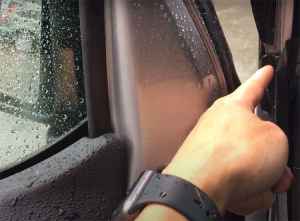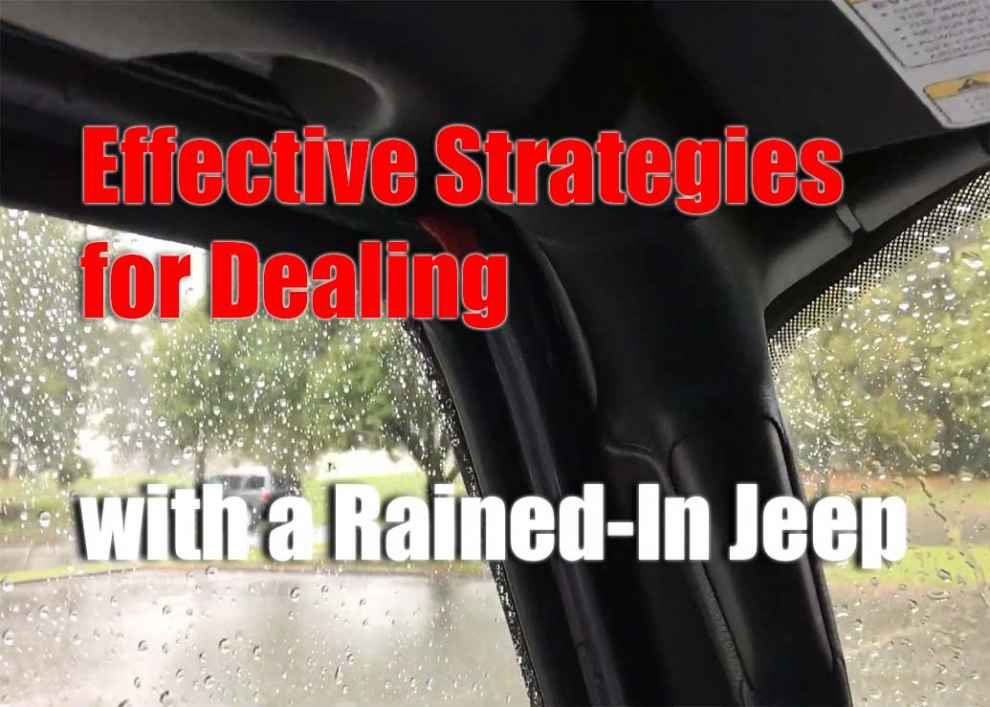Navigating the aftermath of a rain-soaked Jeep can be challenging for any owner. Whether it’s a sudden storm or gradual water ingress, knowing how to efficiently manage and mitigate damage is crucial for maintaining your Jeep’s longevity and performance. This guide offers a comprehensive look at strategies for dealing with a rained-in Jeep, including preventive measures, immediate response strategies, and long-term maintenance tips. Understanding these steps will help ensure your vehicle remains in optimal condition, safeguarding its functionality and value against weather-related challenges.
Immediate Steps After Water Ingress
When you discover that your Jeep has been rained in, immediate action is crucial to minimize potential damage. Here are the steps you should follow:
- Inspect Externally: Quickly assess any visible external damage. Look for leaks around the Jeep’s doors, windows, and roof.
- Drain the Water: Start by removing any standing water. This can be done by lifting the Jeep floor plugs to allow the water to drain out effectively.
- Air Out the Interior: Open all doors and windows to maximize airflow and aid in drying. Use fans to circulate air effectively inside the vehicle.
- Dry Wet Surfaces: Employ absorbent towels or a wet/dry vacuum to mop up any residual moisture from seats, carpets, and flooring.
- Dehumidify: Place a dehumidifier inside the vehicle to draw out moisture from the air and prevent mold growth.
By following these steps diligently, you can significantly reduce the amount of water damage and maintain the interior and mechanical integrity of your Jeep.
Assessing and Addressing Interior Damage

Long-Term Maintenance and Prevention
To ensure your Jeep remains in good condition and less susceptible to damage from future rain events, consider the following long-term maintenance and preventive strategies:
- Regular Seal Checks: Inspect and replace worn seals and gaskets periodically. This helps prevent water from entering in the first place.
- Apply Protective Coatings: Consider applying water-repellent treatments to your Jeep’s exterior and undercarriage to enhance its resistance to water.
- Use Waterproof Covers: Invest in high-quality waterproof covers for seats and interior components, especially if you frequently encounter wet conditions.
- Clean Drainage Channels: Regularly clean out the Jeep’s drainage channels to ensure they are not clogged, allowing water to escape freely.
- Sheltered Parking: Whenever possible, park your Jeep in a garage or under a cover to protect it from severe weather.
Adopting these practices will not only extend the lifespan of your Jeep but also improve its resilience against environmental elements.
Are Jeeps Waterproof?
While Jeeps are designed for outdoor and rugged use, they are not entirely waterproof. The level of water resistance can vary significantly depending on the model and the age of the vehicle. Older Jeeps or those that have not been well-maintained may be more susceptible to water ingress, particularly around window seals, door seals, and the roof. Regular inspections and maintenance of these areas are critical to prevent water damage. Enhancements such as better seals, protective coatings, and even upgrading to a more robust soft or hard top can greatly increase a Jeep’s ability to withstand water.
Utilizing Jeep Modifications
For Jeep owners who frequent wet or challenging environments, adding specific modifications can significantly enhance their vehicle’s capability to handle water. Installing a snorkel, for instance, prevents water from entering the engine by raising the air intake. This is especially useful for navigating streams or flood-prone areas. Elevating sensitive electronics is another smart modification, protecting the Jeep’s electrical systems from water damage. Additionally, opting for a high-quality, water-resistant soft top, such as the Best Soft Top for Jeep, provides an added layer of protection against rain, ensuring the interior remains dry and secure even during downpours. These adjustments not only prepare the Jeep for adverse conditions but also contribute to its longevity and reliability in all types of terrains.
Conclusion
Understanding how to effectively respond to and prevent water ingress in your Jeep is essential for any Jeep owner. Immediate steps after exposure to water include assessing and mitigating water damage promptly by draining, drying, and dehumidifying the interior. Long-term maintenance should focus on enhancing the vehicle’s waterproofing through regular inspections, using protective coatings, and employing preventive accessories like high-quality covers. As you implement these measures, your Jeep will not only recover more effectively from rain exposure but will also stand a better chance of enduring harsh weather conditions in the future. By fostering a regimen of careful maintenance and prompt response to water ingress, you ensure that your Jeep remains a reliable and durable companion on all your outdoor adventures.

Add Comment